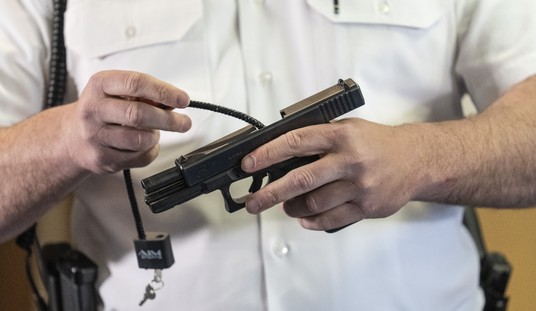For those of us who know guns to any degree, the AR-15 is a fine rifle, but it’s not some murder-death-kill machine. At least, it’s not anymore so than just about any other centerfire rifle you care to name.
Yet we’ve heard time and time again why modern sporting rifles like it are just too lethal to be covered by the Second Amendment.
While I’d missed the discussion, some even trotted out a metric they claimed proved these weapons were far more lethal than anything the Founding Fathers had.
And David Kopel, writing at the Volokh Conspiracy, just destroyed that supposed metric.
An article by Duke law professor Darrell A.H. Miller and Wesleyan history professor Jennifer Tucker argues that gun control laws should vary based on the dangerousness of the firearm. They claim that danger is easy to assess by using the Theoretical Lethality Index (TLI), a metric developed in the early 1960s by military history analyst Trevor Dupuy. In this post, I explain why the TLI is useless as a guideline for the risks posed by different types of firearms in a nonmilitary context.
On the other hand, if TLI is valid in the civilian context, then the TLIs of modern firearms are not much different from those of a good rifle from the early 20th century. Thus, the level of gun control necessary from modern arms would not appear to be greater than the level of gun control in the early 20th century.
What follows this is a rather long but fascinating look at both the claims that the TLI justifies a ban on weapons like the AR-15 and then shreds them apart.
Why? Well, in short, the TLI doesn’t say jack squat about the AR-15. In fact, based on when the TLI was developed, it wouldn’t as the AR-15 was only a couple of years old about the time Dupuy was developing the TLI.
He also notes that TLI is about lethality in a military context and that a civilian context is quite different. In particular, the needs of civilians are different because the kind of engagements one might find themselves in is different. Range, for example, which is essential for military long guns is less important outside of hunting. After all, self-defense engagements are rarely at a range greater than 50 yards and, as noted in the piece, usually with 10 yards.
Kopel then goes on to describe how Dupuy figured out the TLI of various weapons and correctly argues that the AR-15, at least in a civilian context, is no more lethal than bolt-action rifles of the early 20th Century.
Now, the truth is that Kopel made an argument that will likely be ignored by many in the gun control crowd. They’ll keep touting TLI as if it’s a slam dunk in their favor, but TLI was never about determining which guns should be lawful for private ownership and which weren’t. It was about assessing the tools available to soldiers in different eras.
I mean, it includes swords, longbows, and javelins, for crying out loud. It’s pretty clear it’s not about setting policy.
Look, the AR-15 is what it is, a semi-automatic firearm that is little different from other semi-automatic firearms out there. As Kopel noted, if one were to develop a lethality index for guns in a civilian context, it’s unlikely the AR-15 would be near the top, especially since most lives are taken with handguns and not long guns of any kind.
If only the anti-gun crowd would get the memo and move on.








Join the conversation as a VIP Member